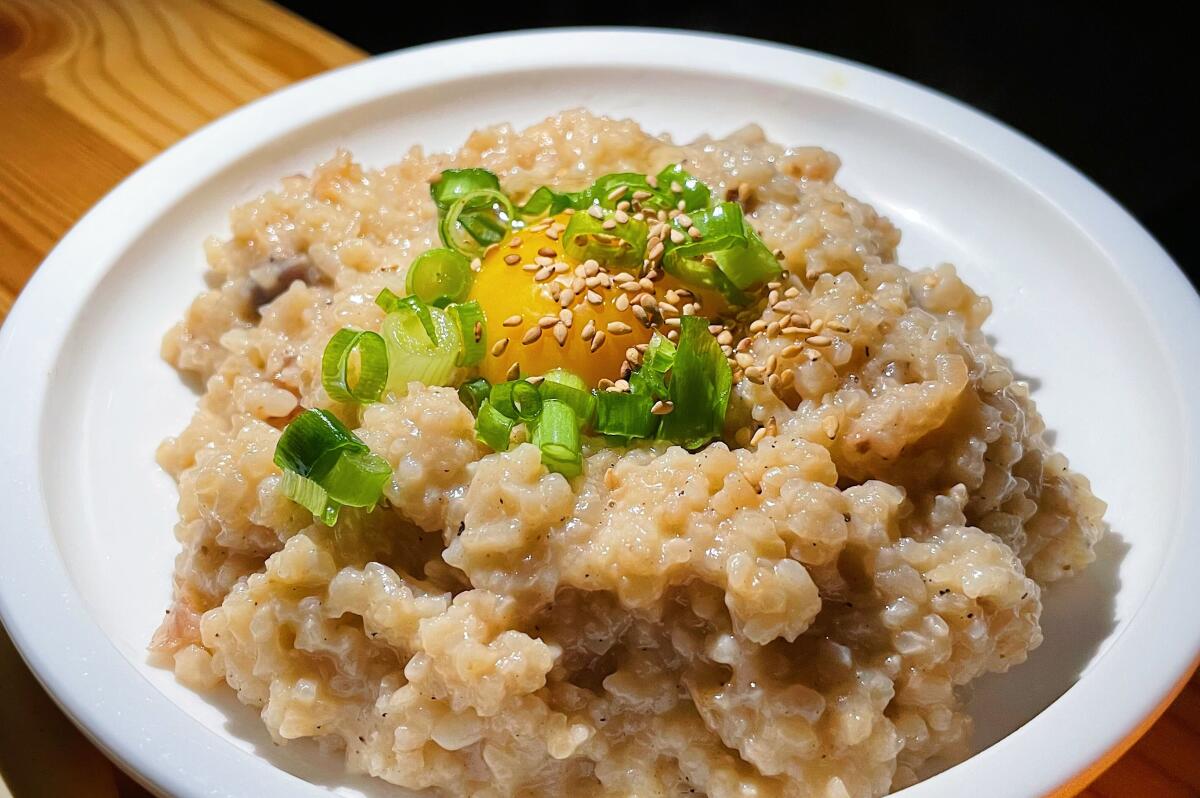
Are you eating the crispy rice at the bottom of the pot? 13 L.A. spots to try nurungji
- Share via
- Nurungji, or Korean scorched rice, refers to the crispy layer of rice that forms at the bottom of a pot or cooking vessel.
- The resourceful dish can be eaten on its own, steeped in hot water as tea or sprinkled with sugar as a dessert.
- L.A.’s Korean restaurants offer both traditional and innovative takes on nurungji.
After a raucous night out in my 20s, the real afterparty was always at BCD Tofu House — hunched over bubbling Korean tofu stew and a sizzling-hot stone bowl of steamed rice. After I’d scooped most of it out, a server would pour warm tea into the bowl, loosening the rice clinging stubbornly to the bottom. Scraping up those crispy-chewy bits of scorched rice, known in Korean as nurungji, quickly became my favorite part of the meal.
Long before electric rice cookers, Koreans traditionally cooked rice over an open flame in an iron cauldron called a gamasot. As it steamed, the bottom layer would crisp up against the hot metal, forming golden-brown nurungji.
“Today, nurungji simply means the crispy layer of rice that forms at the bottom of any pot or cooking appliance,” says Sarah Ahn, who co-wrote the Korean cookbook “Umma” with her mother, Nam Soon Ahn. “Personally, and within Korean culture, I see nurungji as a deeply nostalgic food, especially for Koreans of my mom’s generation.”
Chef and cookbook author Debbie Lee adds, “Sometimes it’s intentional, sometimes it’s from overcooking — what I call a great culinary accident.”
Korea isn’t alone in its love for scorched rice. Persian tahdig is the crust that forms at the bottom of the pot, flipped and served with the crispy layer on top. Chinese guoba is crispy rice paired with saucy stir-fries to soak up every bit of flavor. In West Africa, kanzo refers to the caramelized layer left behind after cooking, often found in dishes like jollof rice. Spain’s socarrat forms the base of well-executed paella.
And in Korea, nurungji is endlessly versatile — enjoyed on its own, steeped in hot water or tea as sungnyung (thought to be a soothing palate cleanser and digestive aid), or transformed into nurungji-tang, where the rice becomes the crunchy base for a light broth with seafood or vegetables.
With its nutty, toasted flavor that highlights the grain’s natural aroma, nurungji is comfort food born out of practicality. “Like so much of Korean food, it represents our resourcefulness — nothing goes to waste! — and our ability to find flavor in humble things,” says Sarah. Rather than discarding it, Koreans embraced the crunchy layer as a snack or meal.
“My parents are from Pyongyang and fled during the war,” says Lee. “My mother told me that they’d find an abandoned house to rest in, and nine times out of 10, there was rice. They lived off porridge, steamed rice, and ultimately nurungji as a snack.”
SeongHee Jeong, chef and co-owner of Koreatown’s Borit Gogae, remembers eating it sprinkled with sugar — a delicious treat when sweets were scarce. While there’s no single way to make it today, Sarah and her mom swear by the traditional method. “Nothing compares to the flavor of rice cooked in a gamasot over a wood fire,” Sarah says. “That taste is so iconic, you’ll even find packaged snacks trying to replicate it.”
In L.A., some restaurants keep it old-school by serving nurungji simply steeped in tea or hot water, while others are getting creative with it. Think: nurungji risotto at Jilli, an iced nurungji crema at Bodega Park or a fried chicken and nurungi dish at Fanny’s. At her Joseon pop-up last year, Lee even spun it into a nurungji crème brûlée.
“It’s truly amazing how humble ingredients born from hardship always find their way back,” says Sarah.
Here are 13 of the best restaurants in L.A. serving nurungji in both traditional and unexpected ways.
Lasung Tofu & Pot Rice
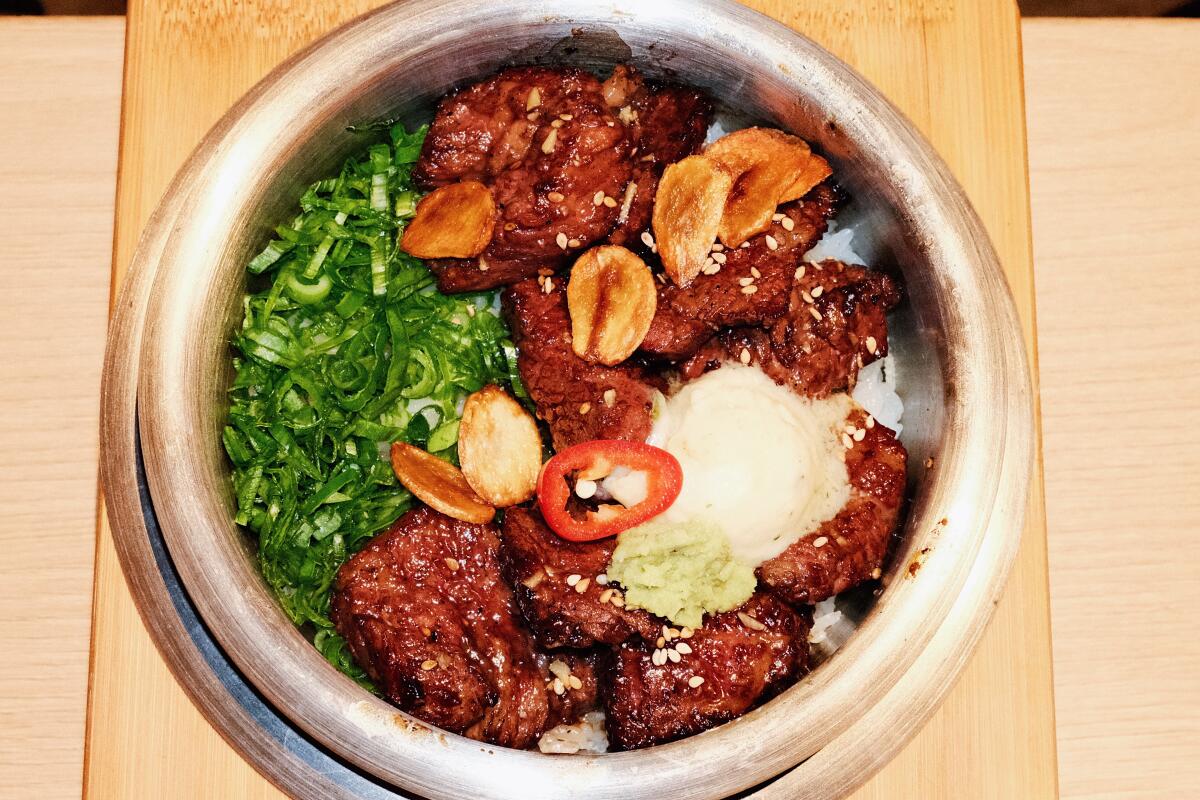
BCD Tofu House
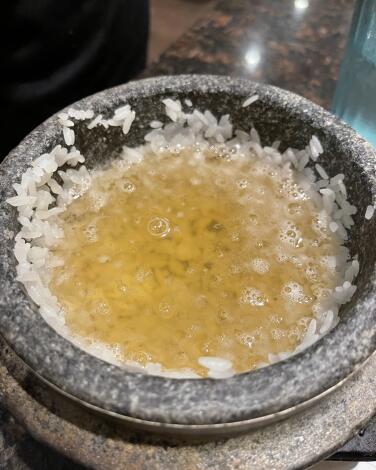
Jilli
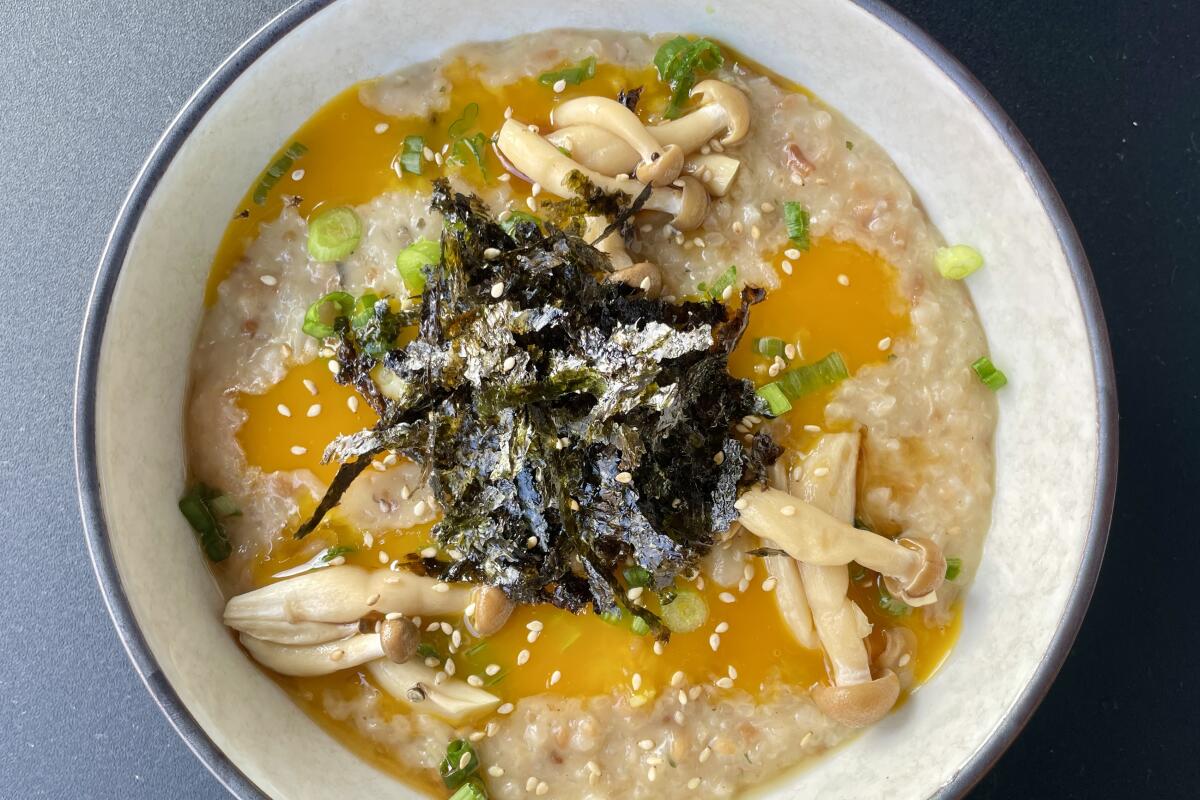
Openaire

Fanny's

Damsot

Harucake

Bodega Park

Chunju Han-il Kwan

Olle Korean Cuisine
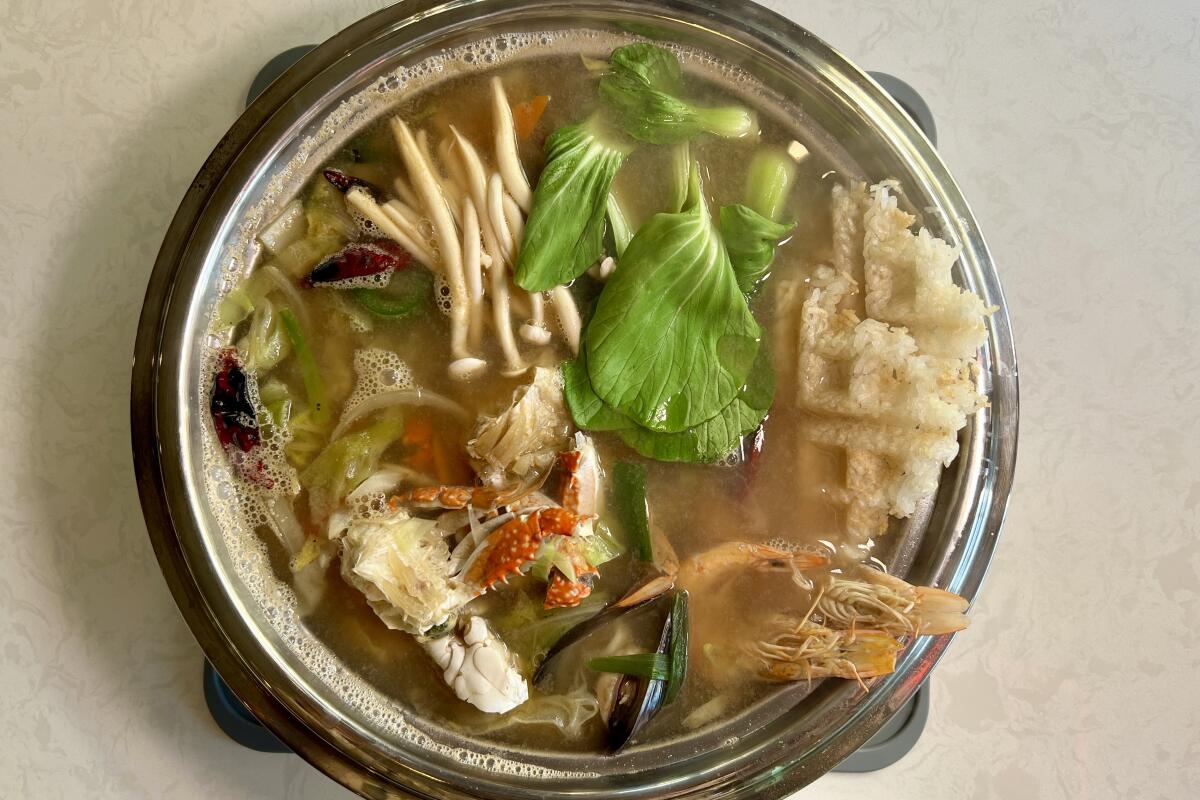
Majordomo

Gong Gan

Borit Gogae








